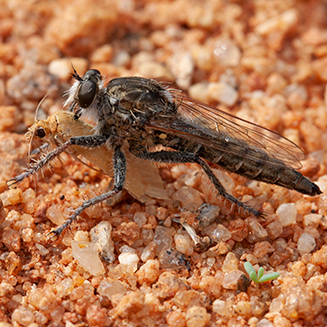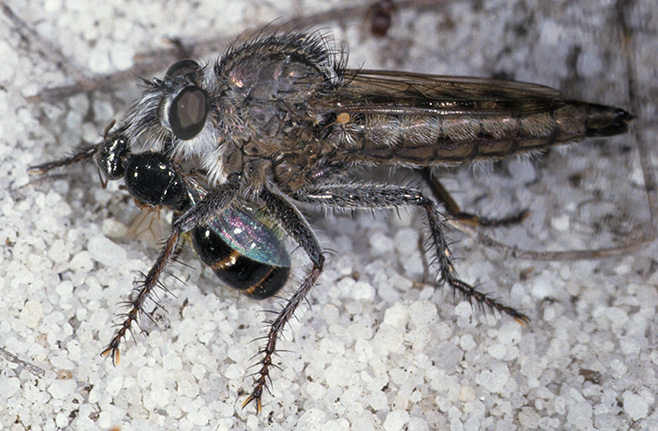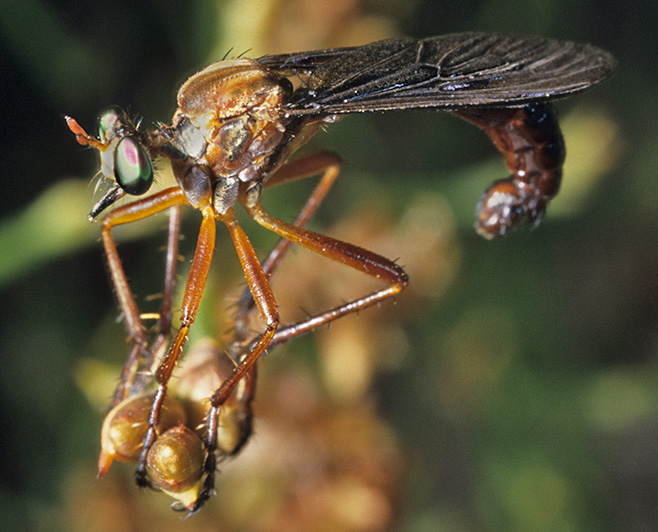|
Family: Asilidae (robber flies)
Life
> Eukaryotes >
Opisthokonta >
Metazoa (animals) > Bilateria > Ecdysozoa
> Panarthropoda > Tritocerebra > Phylum:
Arthopoda > Mandibulata >
Atelocerata > Panhexapoda >
Hexapoda
> Insecta (insects) > Dicondyla > Pterygota >
Metapterygota > Neoptera > Eumetabola > Holometabola > Panorpida > Antliophora
> Diptera (flies) >
Brachycera > Muscomorpha > Asiloidea
 |
 |
|
Large robber fly with butterfly prey, photographed in Eastern Cape. [photo
Hamish Robertson] |
Robberfly with moth prey, southern Namibia.[photo Hamish Robertson] |
 |
|
Neolophonotus sp. with captured ant alate, in mesic mountain fynbos. [photo
Hamish Robertson ©] |
 |
|
Pegesimallus sp. in mesic mountain fynbos. [photo Hamish Robertson] |
Robberflies as adults are aerial predators that wait in ambush until an insect flies past and then fly up, grab hold of it and tumble to the ground where the fly subdues the prey by penetrating the body with its stout proboscis and injecting saliva that contains neurotoxins that kill as well as proteolytic enzymes that break down the body contents. It then sucks out the contents. The lifecycles of robberflies are poorly known - the larvae are known to live in soil, leaf litter or rotten wood and evidently are also predatory. There are over 7000 species of robberflies worldwide with 790 species recorded from South Africa (SA Animal Checklist).
References
Oldroyd, H. 1974. An introduction to the robber flies (Diptera:
Asilidae) of South Africa. Annals of the Natal Museum 22: 1-171.
Dikow, T. & Londt, J.G.H. 2000. A review of Lamyra
Low (Diptera: Asilidae: Laphriinae). African Entomology 8: 189-200.
[reviews the 4 species recognised. Members of this genus usually feed on wasps,
bees and flies and some species look wasp-like in appearance and behaviour].
Links
|
